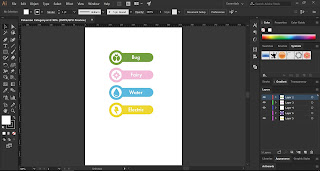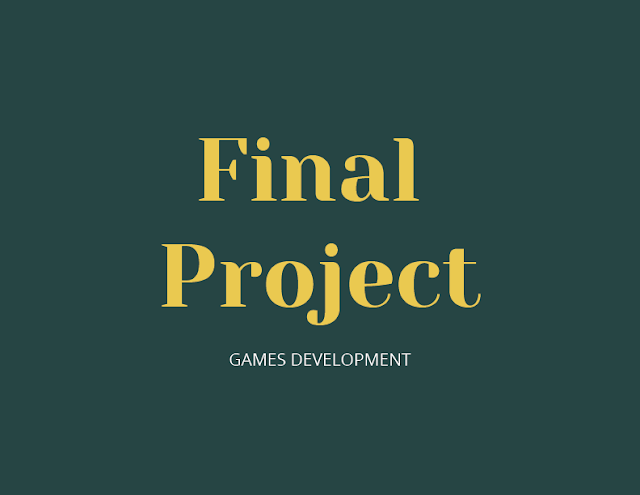Information Design - Exercises
7.01.19 - 02.02.19 (Week 1 - Week 4)
Tamara Audrey Saputra (0335846)
Information Design
Exercises
Lectutres
Lecture 1: Briefing & After Effect Refreshment
7.01.19 (Week 1)
This week we were briefed about the overall of the module and what outcomes are expected. We were also directly assigned a refreshment exercise to recall our After Effect skills.
Lecture 2: Brief History of Information History
8.01.19 (Week 1)
Ms. Anis briefed us again about our assignments in the module. She then proceeds with a lecture about the brief history of information history. Which talks about how it started out and why visualizing information helps us. Apparently, people respond faster to visuals and our brain processes information faster with the help of visuals.
Lecture 3: Manuel Lima's 9 Directives Manifesto
9.01.19 (Week 1)
In this class, our group presented a presentation about Manuel Lima's 9 Directives Manifesto.
Lecture 4: Saul Wurman's L.A.T.C.H
14.01.19 (Week 2)
In this class, our group presented a presentation about Saul Wurman's L.A.T.C.H.
Lecture 5: Miller's Law (Chunking)
15.01.19 (Week 2)
In this class, our group presented a presentation about Miller's Law (Chunking).
Lecture 6: Isometric Design
28.01.19 (Week 4)
In this class, our group presented a presentation about Isometric Design.
In this class, our group presented a presentation about Isometric Design.
Instruction
Exercises
Exercise 0: AE Refreshment
7.01.19 (Week 1)
In this exercise, we were assigned to create a simple infographic animation using After Effects. The theme options were: Food, Sports, and Music. I opted for food and cover about cheese's fun fact.
 |
| fig 1.1: Illustrations Used |
Final Result
Exercise 1: Button Infographic
7.01.19 - 14.01.19 (Week 1 - Week 2)
For this exercise, we are told to create an infographic poster and visualize the data based on the button's data that we have collected in the class. We have to choose 5 different button colors and it should be at least A4 in size.
Here is the data of the 5 chosen buttons:
 |
| fig 2.2: Data |
 |
| fig 2.3: Composition Plan |
After deciding which composition suits the best, I then execute the idea in Photoshop.
This infographic's target audience is for young adults ranging from 18-25. Hence, for the design, I aim for a clean minimalistic look in order for the reader to easily understand the content without much decorative that might cause distractions and reduce the essence of an infographic.
Exercise: AE Dynamic Number
This infographic's target audience is for young adults ranging from 18-25. Hence, for the design, I aim for a clean minimalistic look in order for the reader to easily understand the content without much decorative that might cause distractions and reduce the essence of an infographic.
 |
| fig 2.7: Final Result |
Exercise: AE Dynamic Number
15.01.19 (Week 2)
In this week's class, we did a quick exercise on the Dynamic Number. I covered the topic of Google sales revenue from 2013-2017.
After conducting my research, I gathered the asset and start to animate it in After Effects using the technique that was taught in class.
Exercise 2: L.A.T.C.H
14.01.19 - 29.01.19 (Week 2 - Week 4)
We were told to create a 30-second silent animated infographic video that represents the L.A.T.C.H (Location, Alphabet, Time, Category, Hierarchy) by using the data of 4 kinds of Pokemon.
I used the "Pokemon: Sun & Moon Edition"
I used the "Pokemon: Sun & Moon Edition"
https://www.pokemon.com/us/pokedex/
https://pokemondb.net/pokedex/game/sun-moon#dex-poni-island
The followings are how I applied the principle:
Location: The 4 different islands - each is represented by a pokemon that could only be found there.
Alphabet: Islands are introduced in an alphabetical manner.
Time: Pokemon's evolution.
Category: Pokemon's type of category.
Hierarchy: Pokemon's evolution.
I assembled the assets on Illustrator and import it to After Effects.
 |
| fig 4.1: Category |
 |
| fig 4.2: Evolution |
 |
| fig 4.3: Map |
 |
| fig 4.4: Map Reference |
 |
| fig 4.5: Animation Process |












Comments
Post a Comment